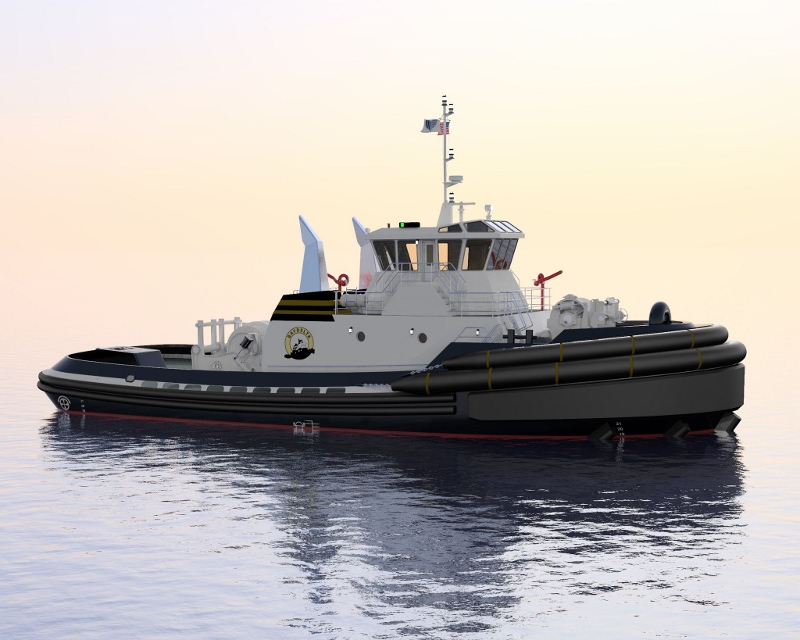Tugboat designers and builders delivered a lot of new, higher horsepower tugboats in 2016. The next generation is coming in the first half of 2017.
Containerships have been getting bigger and the completion of a wider Panama Canal expansion is driving a lot of the newbuild activity. McAllister Towing and Transportation Co. Inc., based in New York, will get the Capt. Brian A. McAllister, the first of four 100’x40’, 6,770-hp tugs, from Horizon Shipbuilding, Bayou La Batre, Ala., in spring 2017.
The new tugs with bollard pull around 90 short tons will be McAllister’s first to meet U.S. Environmental Protection Agency Tier 4 air emission standards for higher horsepower vessels. After the completion of a $1.3 billion project to raise the Bayonne Bridge over the Kill Van Kull channel, the tugs will be taking those ships under it to Port Newark on the New Jersey side of the harbor.
“There’s going to be a need for bigger boats, when you think of the windage on the sides of these ships,” said Ed Kelly, executive director of the Maritime Association of the Port of NY/NJ.
On the West Coast, containerships have been getting bigger for years. Jensen Maritime, Seattle, designed the McAllister boats and they are close in power and size to another Jensen creation: a 110’x40’, 6,770-hp multipurpose tractor tug under construction by JT Marine, Vancouver, Wash. That one is scheduled for delivery to Vessel Chartering LLC, a subsidiary of Baydelta Maritime, San Francisco, in the second quarter of 2017.
The Baydelta vessel is designed to have the towing performance and range of larger oceangoing tugs, with a bollard pull of 93 to 95 short tons, while still providing the deft ship assist and escort touch of smaller harbor tugs. The escort capability was enhanced in anticipation of more, larger containerships up to 18,000-TEU capacity coming to West Coast ports.
How much bigger can harbor tugs get?
“You’re pushing up on the upper limit of what a typical 95’ to 100’ docking tug has,” Bruce Washburn, executive vice president of tug builder Washburn & Doughty Associates, Inc., East Boothbay, Maine, told me earlier this year. That 6,500-hp power level represents a kind of plateau in terms of fitting more power — plus the added weight of drives and now, Tier 4 emissions packages — into the hull.
Meanwhile, for smaller workboats, ingenuity abounds. At the 2016 International WorkBoat Show in New Orleans, engine and propulsion gear manufacturers offered their own solutions for tweaking out more power without crossing the Tier 4 thresholds.





